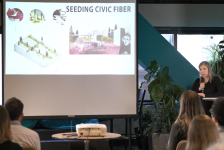During the Land8x8 Lightning Talks, Ashley Pelletier of Sasaki shared their Dumke Arts Plaza project as an example of collaboration and new ways of thinking and designing for public art spaces. Public art has become an increasingly important element in landscape architecture projects, with its ability to enhance public spaces and create unique experiences. However, the integration of public art presents both challenges and opportunities. There are complexities and considerations of incorporating public art within landscape architecture, using the Dumke Arts Plaza as a compelling example.
Public art is a diverse and multifaceted realm, ranging from temporary to permanent installations, kinetic sculptures to visual art, and much more. As landscape architects, it is crucial to comprehend the intricate nature of public art and educate both ourselves and our clients about its nuances. The success of public art lies in its seamless integration within the landscape, offering context and purpose.
The Dumke Arts Plaza, located in the Nine Rails Creative District of Ogden, UT, serves as an exceptional example of blending art and landscape architecture. The project began amidst the challenges of the pandemic, but its vision was to design something truly unique and reflective of the community. To celebrate Ogden’s natural surroundings and engage the community, the design team embraced the concept of land art. Inspired by nearby iconic installations like Spiral Jetty and Sun Tunnels, the plaza aimed to be an arts epicenter for the American West. By understanding the artistic inspiration drawn from the landscape, the team integrated landscape-driven forms and presented various concepts for public art within the space.
The plaza’s design features three distinct rooms, each inspired by Ogden’s landscape typologies. The main plaza pays homage to the city grid prevalent in Utah cities, while the folded planes evoke the foothills of the Wasatch Mountain Range. The central element is a plinth inspired by the grandeur of the mountains, offering visitors a panoramic view of the breathtaking surroundings.
Recognizing the need for flexibility in accommodating diverse sculptures and artists, the plaza incorporates structural poles strategically placed throughout the site. These poles are engineered to support aerial sculptures, and conduits for power supply and lighting are integrated for seamless installations. Sculptural pads with varying capacities and lighting fixtures allow artists to exhibit their work effectively.
To ensure community involvement and comfort, the design team prioritized community outreach. Through a gritty aesthetic that resonates with Ogden’s character, materials provided in both Spanish and English, and inclusive events like the Welcome Fest, the plaza became a space where everyone felt welcome. Feedback from the community emphasized the importance of color to create a comfortable and engaging environment.
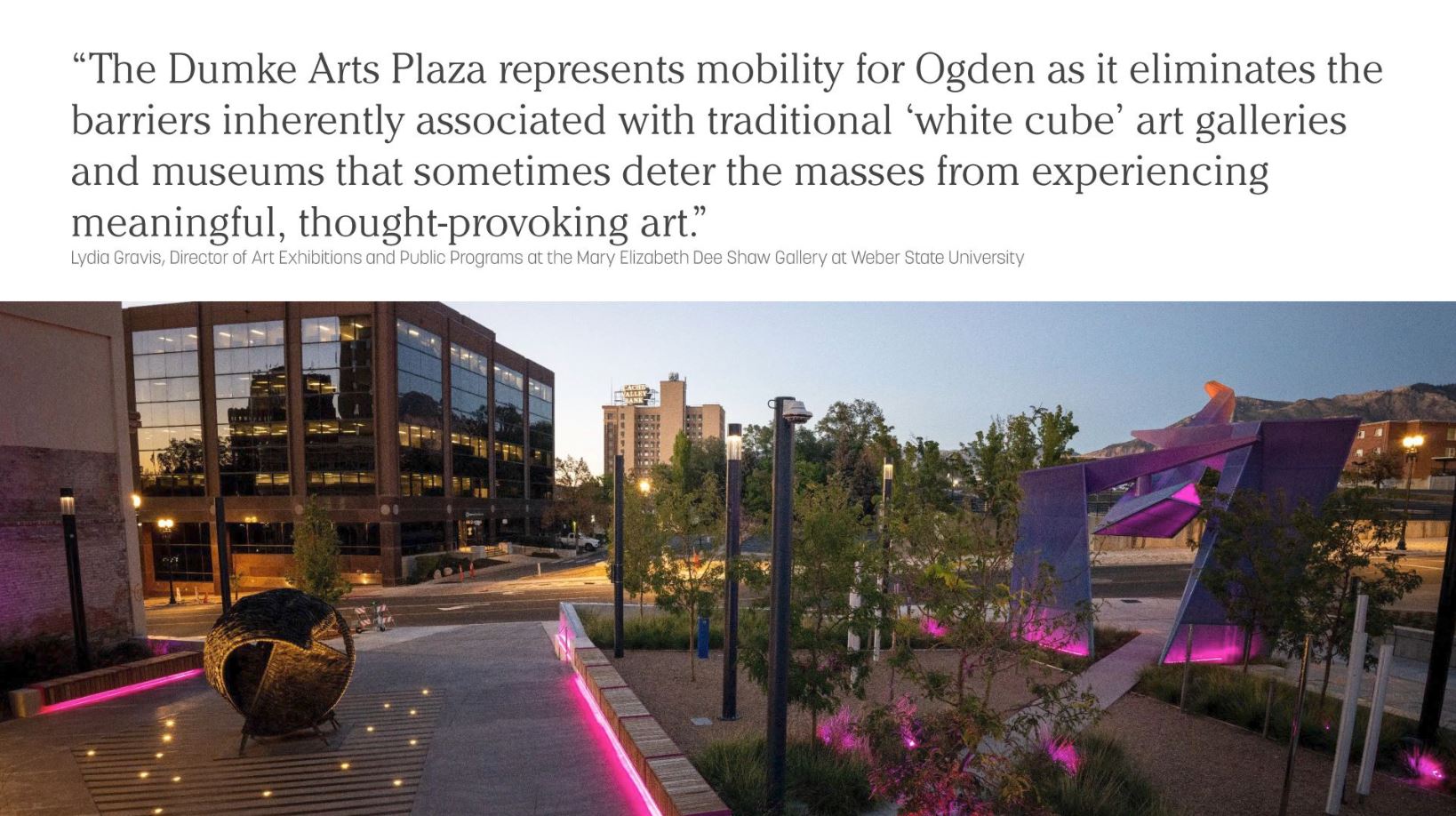
Image: Sasaki
The Dumke Arts Plaza not only aims to be a space for renowned artists but also a platform for local talent. The collaboration with Weber State University and the commitment to biannual curated exhibitions further enriches the space and provides opportunities for interaction and artistic exploration.
The integration of public art within landscape architecture projects presents an exciting and transformative opportunity. By understanding the complexities and engaging in thoughtful design, landscape architects can create spaces like the Dumke Arts Plaza, where art merges seamlessly with the environment. As we continue to embrace public art, it is vital to foster collaboration, educate ourselves, and prioritize community engagement to make art accessible and thought-provoking for all.
—
This video was filmed on January 19, 2023 as part of the Land8x8 Lightning Talks sponsored by Anova Furnishings.
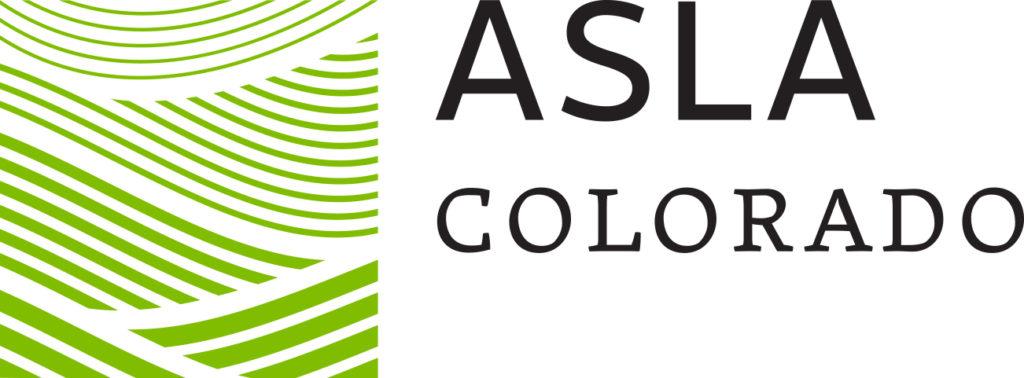
Published in Blog, Cover Story, Featured



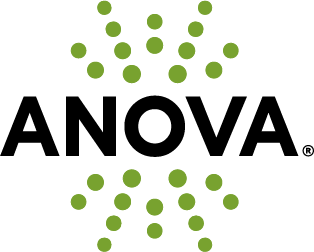
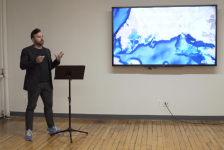
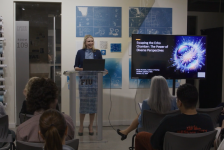
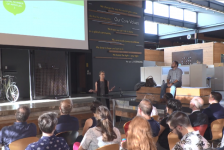
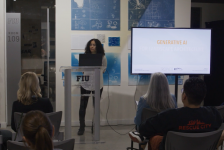
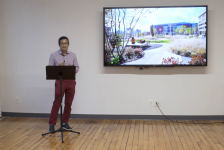
![Transforming Tysons [Video]](https://land8.com/wp-content/uploads/2017/12/sp-land8x8-224x150.png)


